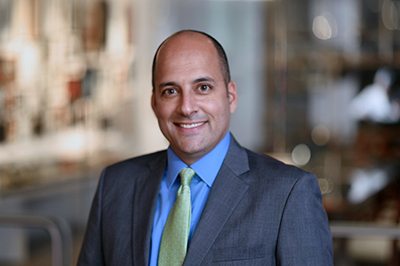FDA Clears Deep TMS Device for Treatment of Obsessive-Compulsive Disorder
Abstract
The FDA clearance of Brainsway’s Deep TMS device for OCD marks the first new psychiatric indication for TMS in nearly a decade.
When transcranial magnetic stimulation (TMS) was first cleared as a treatment for depression in October 2008, many researchers believed this noninvasive neuromodulation procedure would become a major player in psychiatric therapy. Earlier this month the Food and Drug Administration (FDA) cleared Brainsway’s Deep TMS device for the treatment of obsessive-compulsive disorder (OCD).
“This is a big deal,” said Mark George, M.D., a distinguished professor of psychiatry, radiology and neurosciences at the Medical University of South Carolina (MUSC) and director of MUSC’s Brain Stimulation Laboratory. “People have been waiting for that next indication [for TMS] in psychiatry, and almost 10 years to the day [TMS was cleared by the FDA] we finally have one,” he said.
TMS, which uses magnetic fields to stimulate neurons in the brain, has grown into a big industry since the first device was cleared a decade ago, George said. Currently, seven different companies have FDA-cleared TMS devices for depression. Some TMS devices have also been cleared to treat pain associated with migraine headaches, though this procedure involves shorter magnetic bursts than those used for depression.
George noted that the FDA TMS clearance for OCD was limited to Brainsway’s Deep TMS. This device uses a special magnetic coil that can target broader areas of the brain than other TMS devices.
The FDA’s decision was based off a randomized clinical study of 100 OCD patients. The participants were assigned to receive either six weeks of TMS or sham stimulation (25-minute sessions, five times a week). Prior to each session, a therapist employed a behavioral therapy technique known as tailored symptom provocation, which encourages patients to think about their anxieties and/or compulsions.
One month after the last session, 38.1 percent of patients in the TMS group achieved a clinical response (defined as more than a 30 percent reduction in symptom severity as measured by the OCD Yale-Brown Obsessive-Compulsive Scale), compared with 11.1 percent in the sham group. Additionally, 54.8 percent of patients in the TMS group achieved a partial response (more than 20 percent reduction in symptom severity) compared with 26.7 percent in the sham group.
“This is a more sophisticated approach to TMS; using psychotherapy to augment the stimulation effect,” said George. He told Psychiatric News that when patients with depression undergo TMS, they can engage in stationary activities such as reading a book or watching TV, while the device stimulates their brain.

Eric Storch, Ph.D., says he that believes exposure and response therapy and/or antidepressants will remain the frontline treatments for patients with OCD, but TMS will become a valuable second-line approach for patients with treatment-resistant OCD.
Eric Storch, Ph.D., a professor of psychiatry and behavioral sciences at Baylor College of Medicine, also lauded the clearance of TMS for OCD. “TMS is great in that it’s safe, tolerable, and already well-accepted as a psychiatric intervention,” said Storch, who oversees the Cognitive Behavioral Therapy for OCD and Related Disorders program at Baylor. But, he said he believes standard frontline treatments, including exposure and response therapy (working with a therapist to face one’s compulsions and change the mindset toward them) and/or antidepressants, remain superior to TMS.
“For people with treatment-resistant or refractory OCD, however, the addition of TMS is very meaningful,” Storch continued. “Recent medication trials haven’t added much to the existing array [of pharmacotherapy for the disorder], and there is still no good way to deal with patients who show no response or a partial response to first-line therapies.”
Storch is hopeful that TMS may find more use in the future, perhaps as an augmenting agent. As the current treatment protocol involves a brief psychotherapy session, he sees the possibility that TMS could be used after exposure and response or another form of cognitive-behavioral therapy to amplify the effects. That will be a key area of research moving forward, he said.
George has served as an unpaid consultant for Brainsway and other neuromodulation companies; he has also received research grants and donated equipment from Brainsway and other neuromodulation companies. ■



